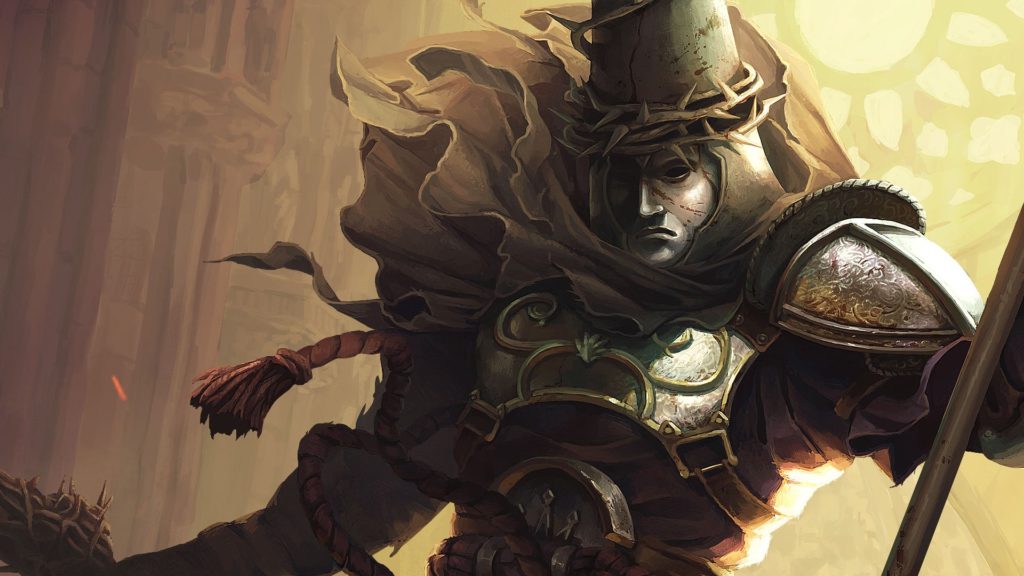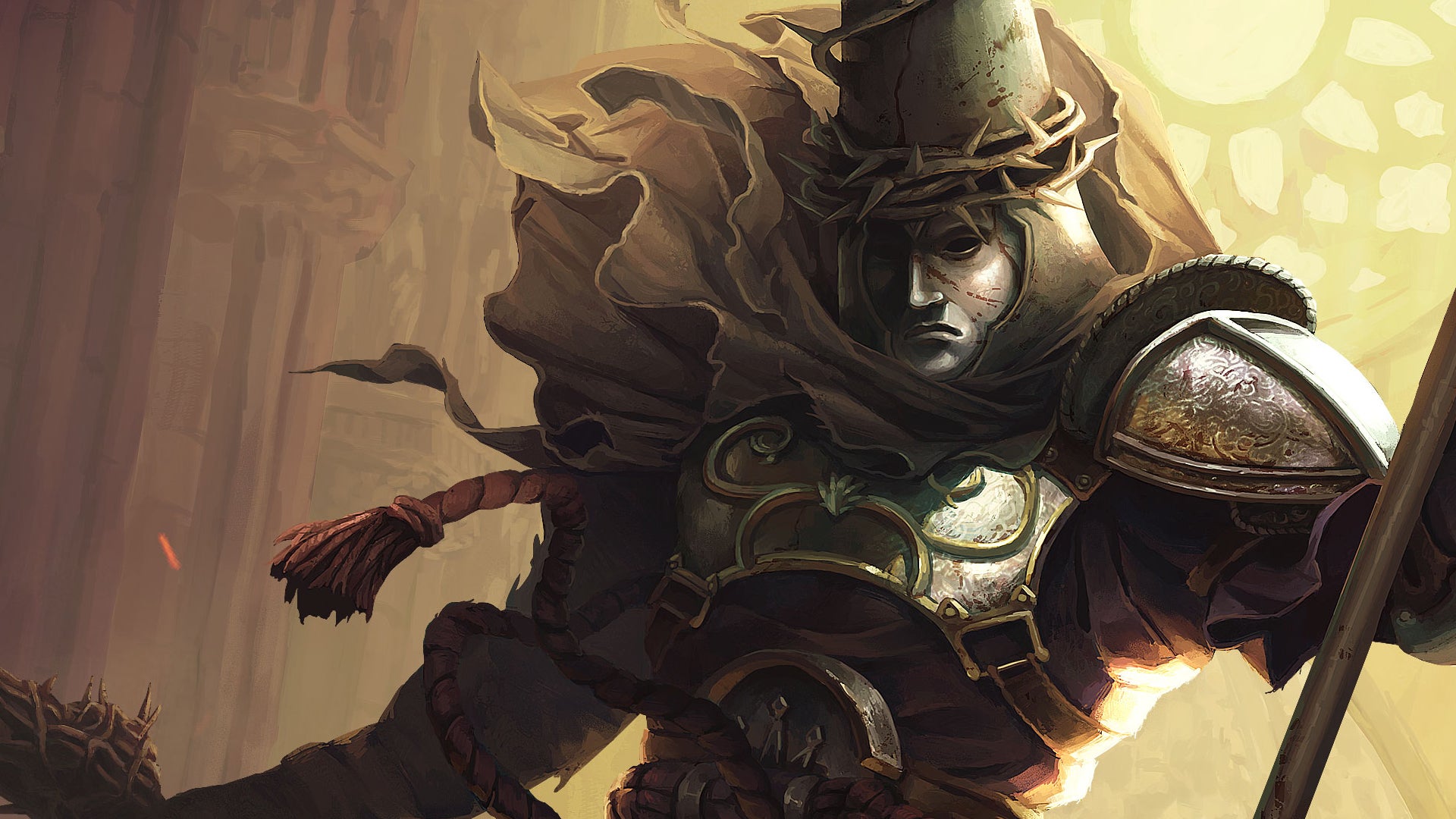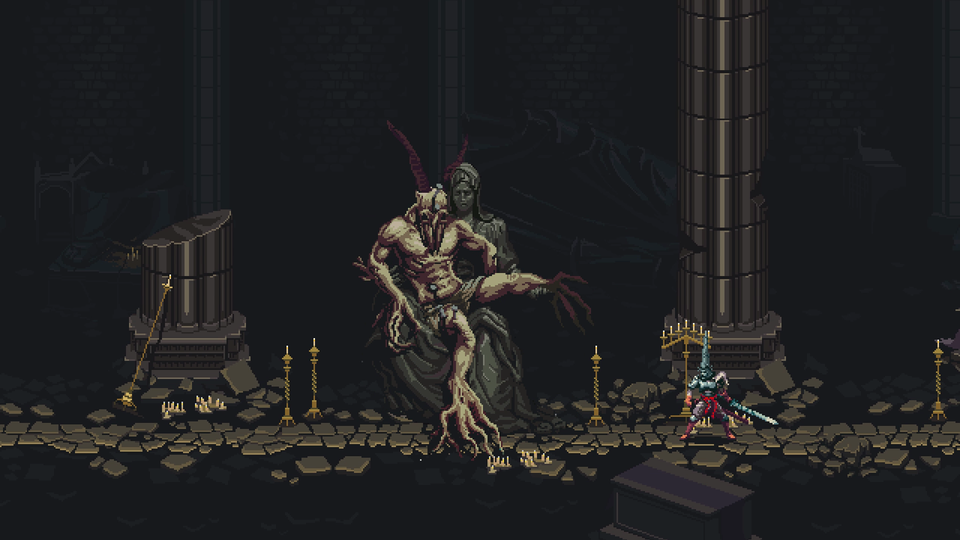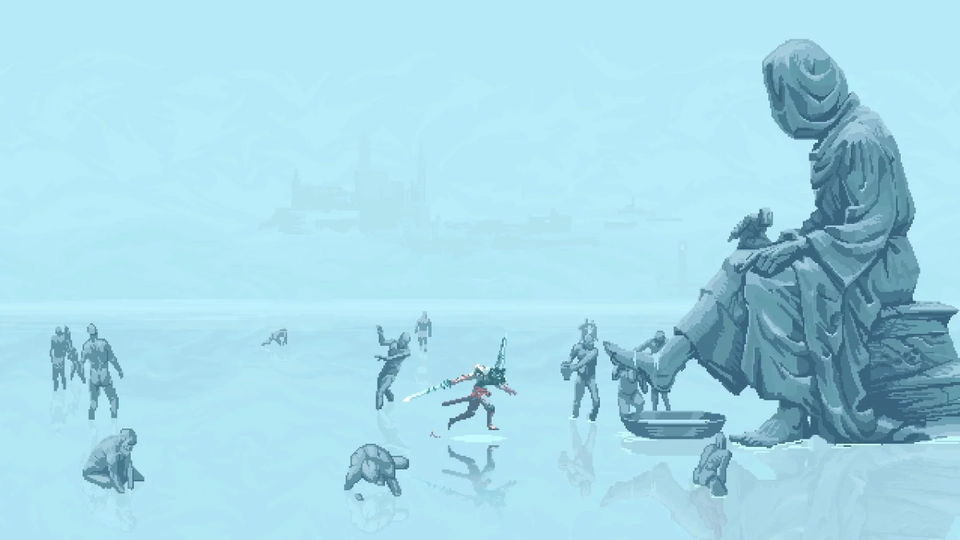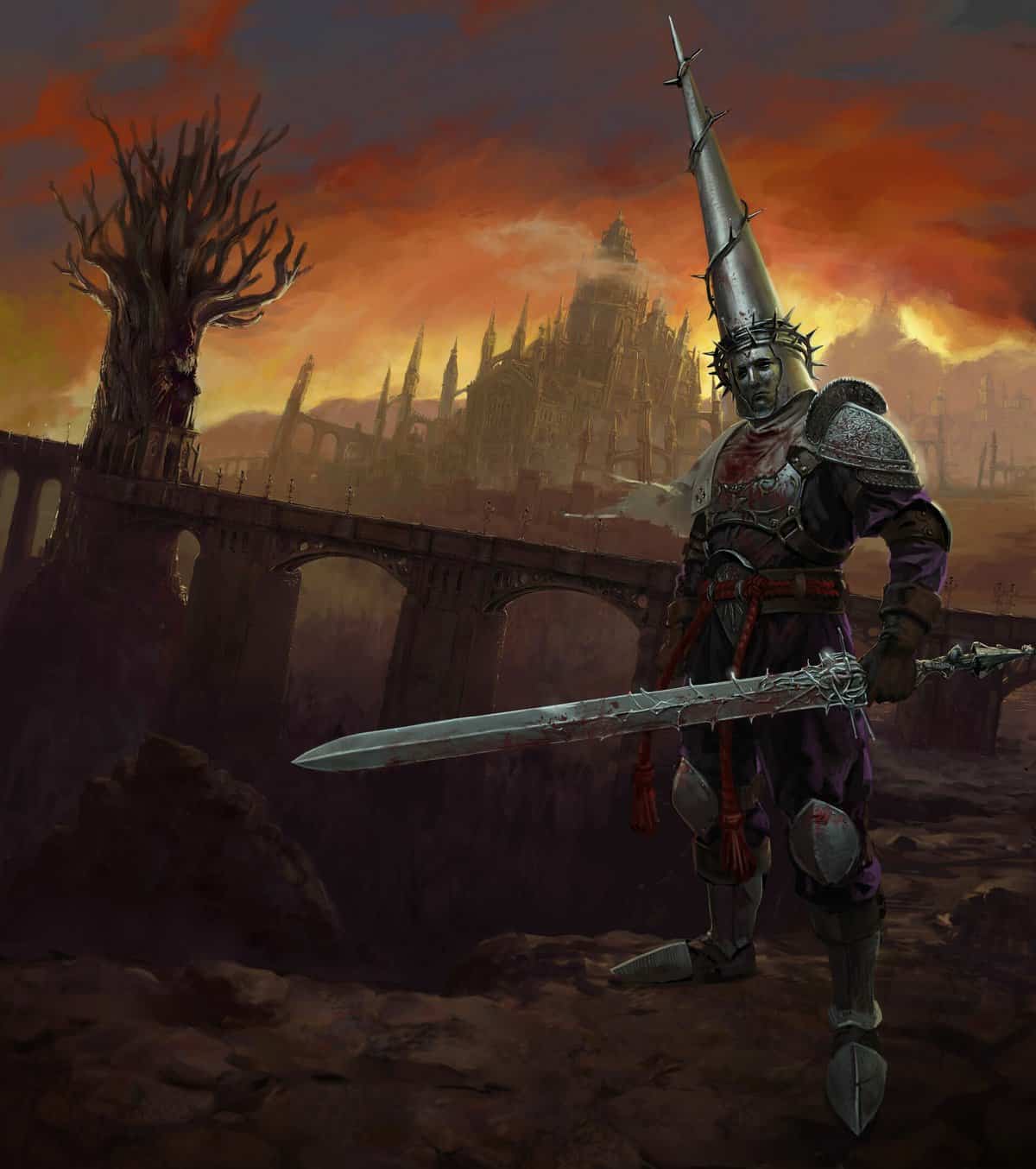You can trust VideoGamer. Our team of gaming experts spend hours testing and reviewing the latest games, to ensure you're reading the most comprehensive guide possible. Rest assured, all imagery and advice is unique and original. Check out how we test and review games here
The hero of Blasphemous is called The Penitent One. He wears a cone-shaped helmet, snarled up in steel thorns, and says nothing. He is on a quest for penance, for what we aren’t initially sure, seeking out a being called the Mother of Mothers and collecting Tears of Atonement from his slain enemies. The land is camel-brown and cracked with thirst, and the people who live in it creak along on prayer-worn knees and seem grateful for whatever cruelty comes their way. I couldn’t help but wonder, with all this biblical bark, how severe and foaming the game’s bite would be. In other words, would playing the thing be fittingly akin to self-flagellation?
You will either be relieved or disheartened to hear that the answer is: No. This is, in the harshness of its challenge, to be considered New Testament – Old Testament, of course, being Dark Souls. (And FromSoftware’s game is what springs to mind when you first glimpse the world in Blasphemous: behold the crumbling stone, the peeling traces of pride still visible in a place that’s been leached of life, and the shifts in colour heralding no vibrancy, merely varying shades of damnation.) Moreover, the developer, The Game Kitchen, doesn’t have a blasphemous bone in its body. Its true deity is the Mother of Metroid, and any attempts to stray from the stone tablets of tradition are to be considered heresy.
Hence the map, whose bounds you are always faithfully pushing back with bouts of platforming and violence – both in the hope of uncovering a hidden cranny, containing some treasured artifact, and in finding a path forwards. Though, owing to the genre, a path backwards or sideways will do just as nicely. In recent years, we have seen a slew of Metroidvania games – chalk it up to the bewildered urge, more potent by the day, to double back on ourselves in search of answers. In order to stand out, Blasphemous blows at the cobwebs of the formula with a simple and enviable strategy: it is beautiful.
Or beautifully gruesome, at any rate. Consider the opening, in which a woman bashes a stone idol against her breast with an awful thud, before it transforms into a blade and impales her. It’s a sickening scene, both in the way it’s framed (through her eyes in the moment of death, then stretching outwards to catch her in a kneeling pose) and in the colours on show (the blood bright against the dull green of her dress). It brings to mind the art of Éric Chahi, who made Another World, with its carefully composed cutscenes, back in 1991, and set games on a cinematic course. What Blasphemous borrows isn’t Chahi’s knack for telling a tale in stylish silence (there is voice acting in Blasphemous, though its quality wavers); it’s the way that each panel compels the mood to thicken and brood.
But the expressive pixel art and well-oiled animation serve a more important purpose, outside of establishing story and tone. The combat, which is stout and dependable – almost to the point of being played out – is leant extra vim and viciousness. For instance, while the window for a parry is wide enough to steal a small chunk of your satisfaction, it is mostly restored by the random button-prompt executions, in which you reduce your foes to a rough paste of crimson. Then, there is the dodge, a lithe slide along the ground that gives you a brief moment of invulnerability. And the height of the game’s clashes are the boss fights, which bring the art style into the spotlight. I won’t soon forget Our Lady of the Charred Visage – an enormous burnt face, one half encrusted with gold, and a gash on the forehead bearing a throbbing brain.
The fight itself was forgettable, and therein is the crux of Blasphemous, a game that has the wit to drape the dull parts of its genre with a veneer of hushed awe, like an old table covered with holy cloth. Take the trinkets you collect on your travels, for example; I have no great drive to scour every corner for ability buffs and bonus items (to be picked and shuffled in your inventory, along with the obligatory skill tree, where you spend your currency), but I am intrigued to read about the Scapula of Carlos, the Executioner, or the Vertebra of Lindquist, the Forger. These grisly relics are exactly the sort of thing that suckers for Dark Souls will dig up and pore over – a camp I find myself helplessly confined to – but they also dwell uneasily on the bonds between the church and the charnel house.
The sensibility and safety of modern religion has been scraped away, reverting us back to a time when faith meant the scarring of flesh. The game never quite takes the Lord’s name in vain; reference is made to the Grievous Miracle, to a ‘divine will, equally pious and cruel,’ and idols are not bound to a crucifix but a single, round stake. Still, we are rooted in a parody of Christianity. The dialogue is spoken with a plain lyricism (‘Such is my penance, as yours is silence’), and elsewhere there is a lacing of Latin – notice the Vs, which are slipped into certain words in place of the letter U, for an authentic dusting of the Dark Ages – a dead language whose ghost still presides, as a mark of authenticity, over matters of the mortal soul.
All of which leaves me with a game that refuses to leave me. Blasphemous sticks devoutly to the dogma of its genre, breaking no new or unhallowed ground. But I count it a mark of strength if a game lingers on the memory, and you might find yourself rapt in the same way I did – looking past the formulaic and the fusty and seeing something more. My favourite moment came when the console was off, as I was walking home from work after playing: I went by the same church I always do, but I felt a coldness clutching at me – a dose of fear, the likes of which long went out of fashion. Perhaps that’s enough to atone for unoriginal sins.
Developer: The Game Kitchen
Publisher: Team17
Available on: PlayStation 4 [reviewed on], Xbox One, Nintendo Switch, and PC
Release Date: September 10, 2019
To check what a review score means from us, click here.
Blasphemous
- Platform(s): Linux, macOS, Nintendo Switch, PC, PlayStation 4, Xbox One
- Genre(s): Action, Adventure, Indie, Platformer
